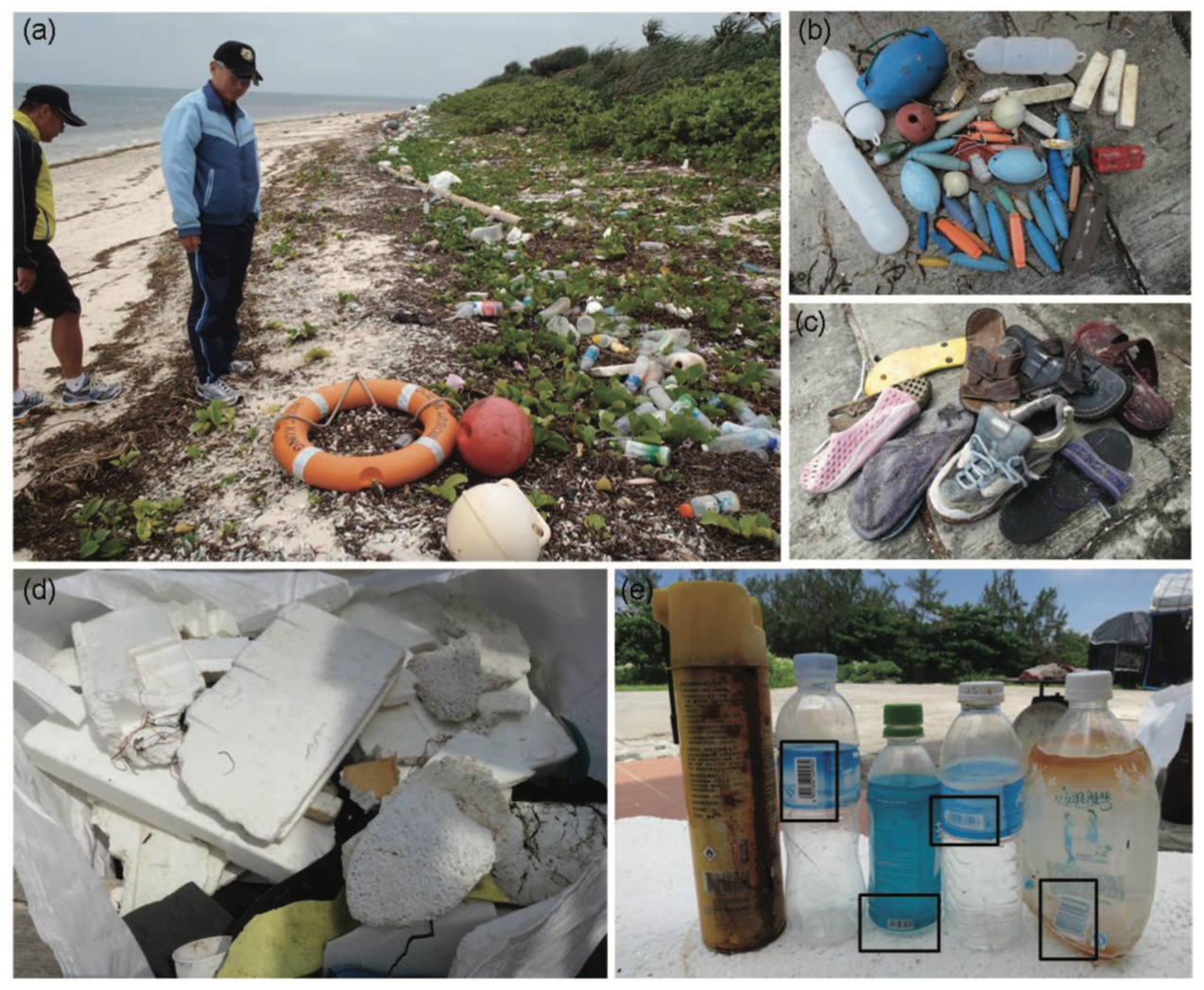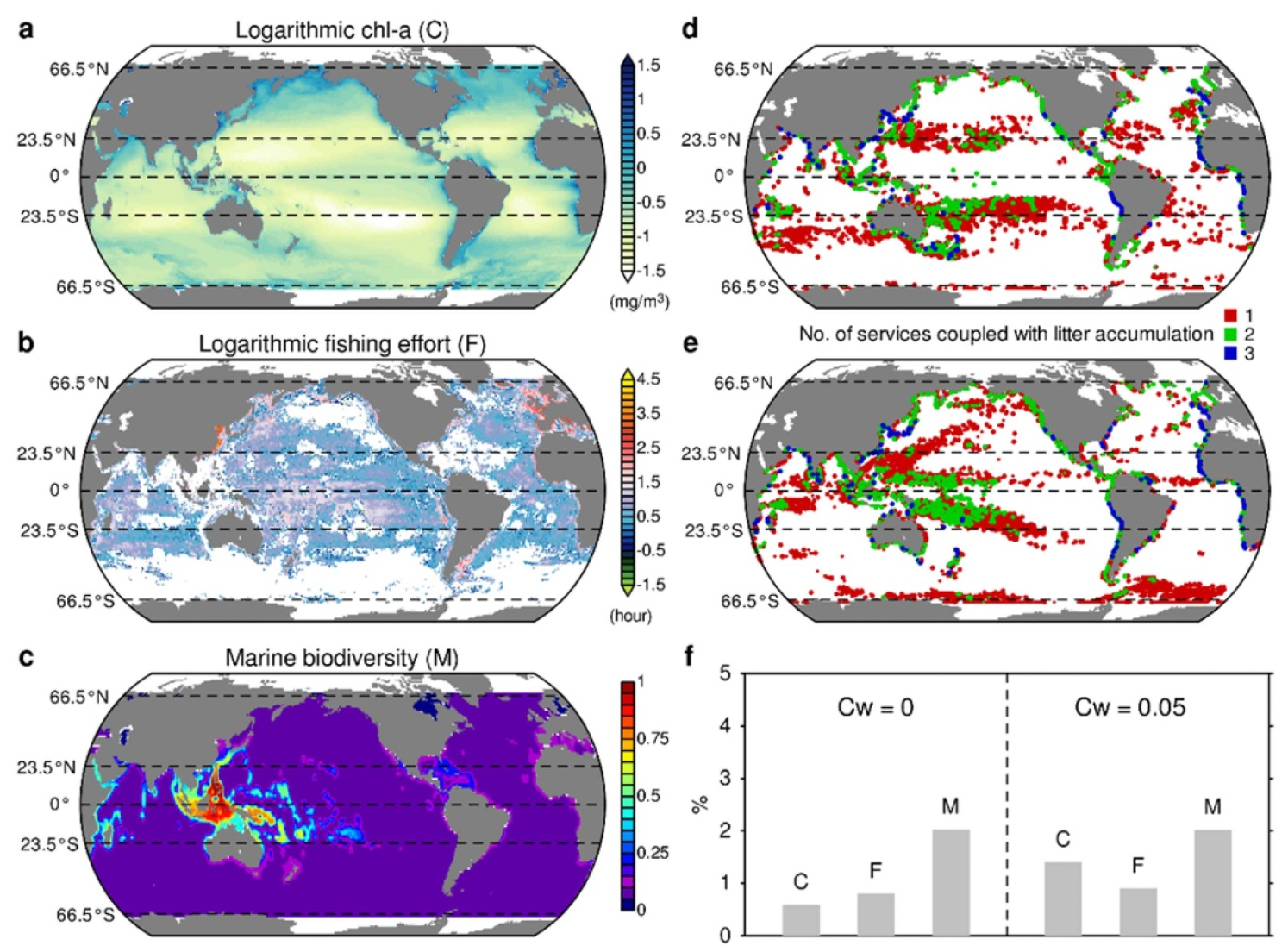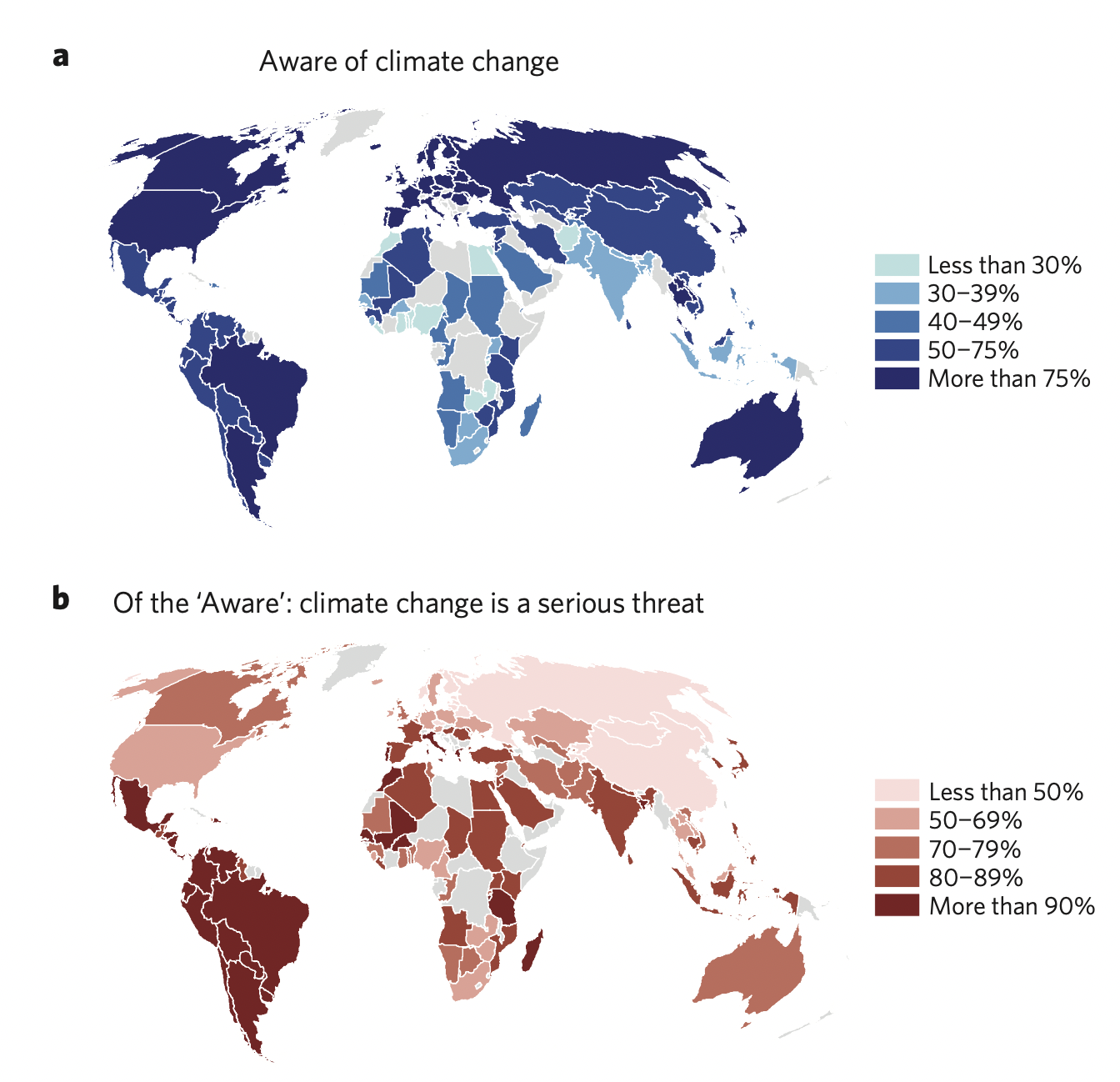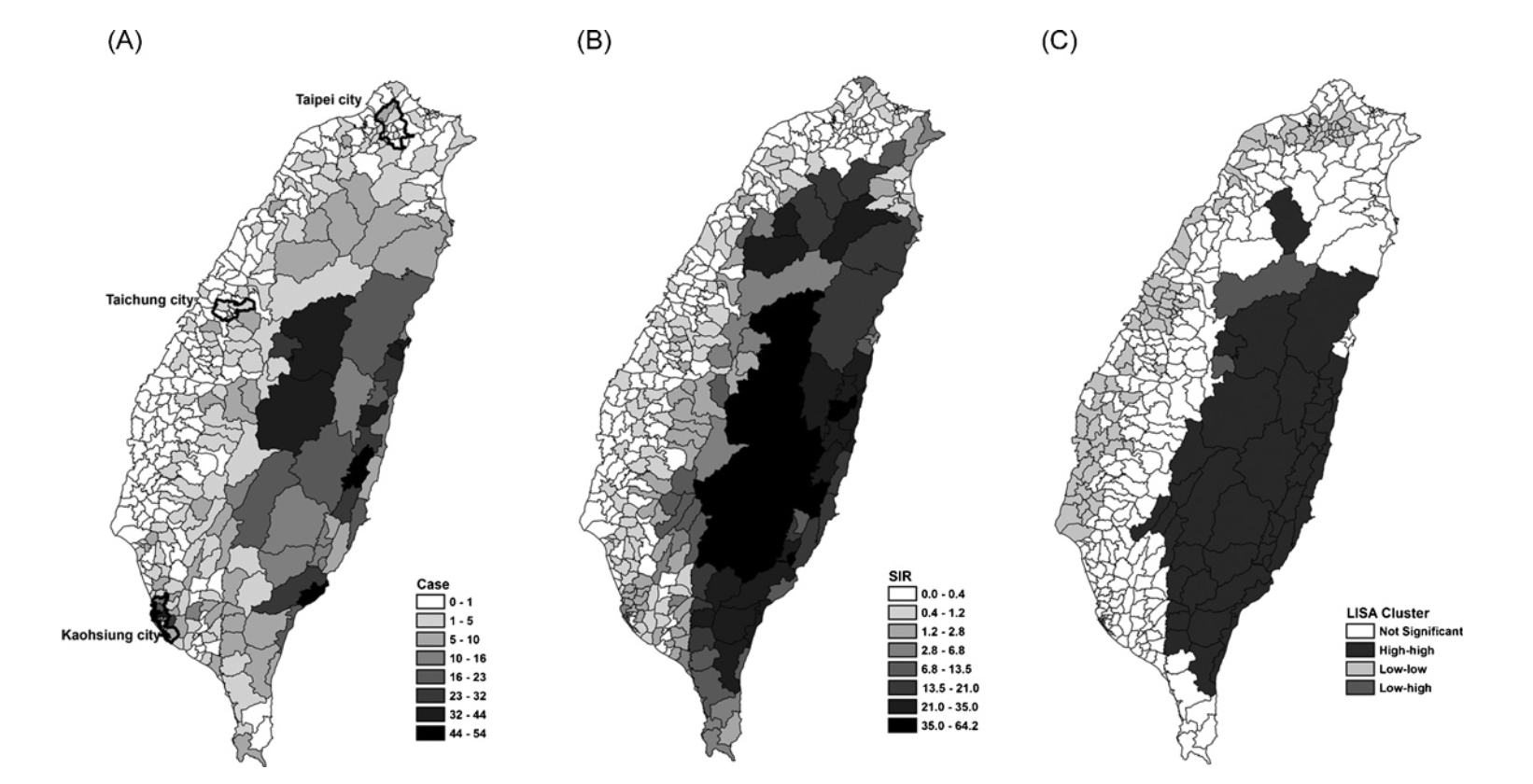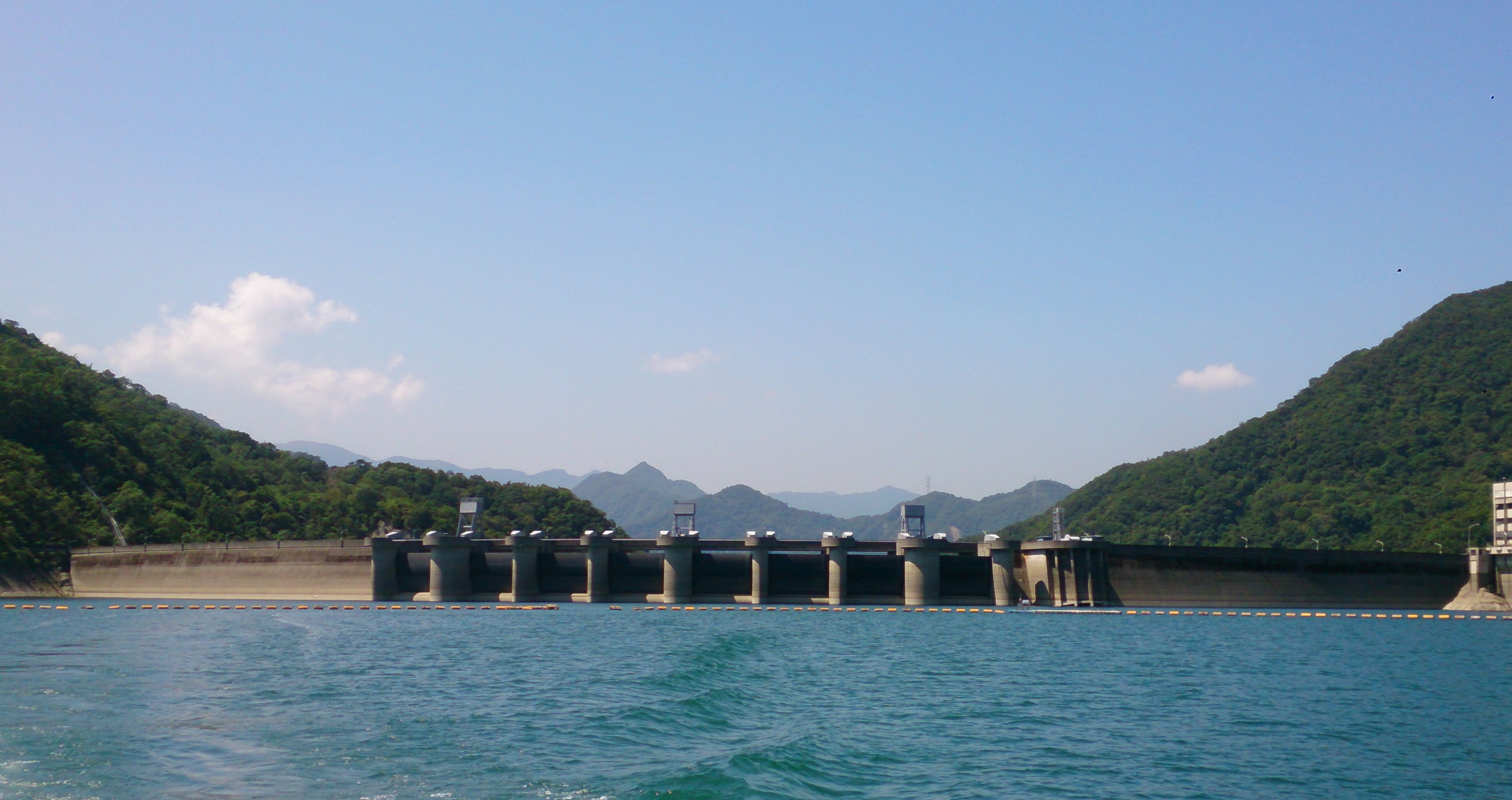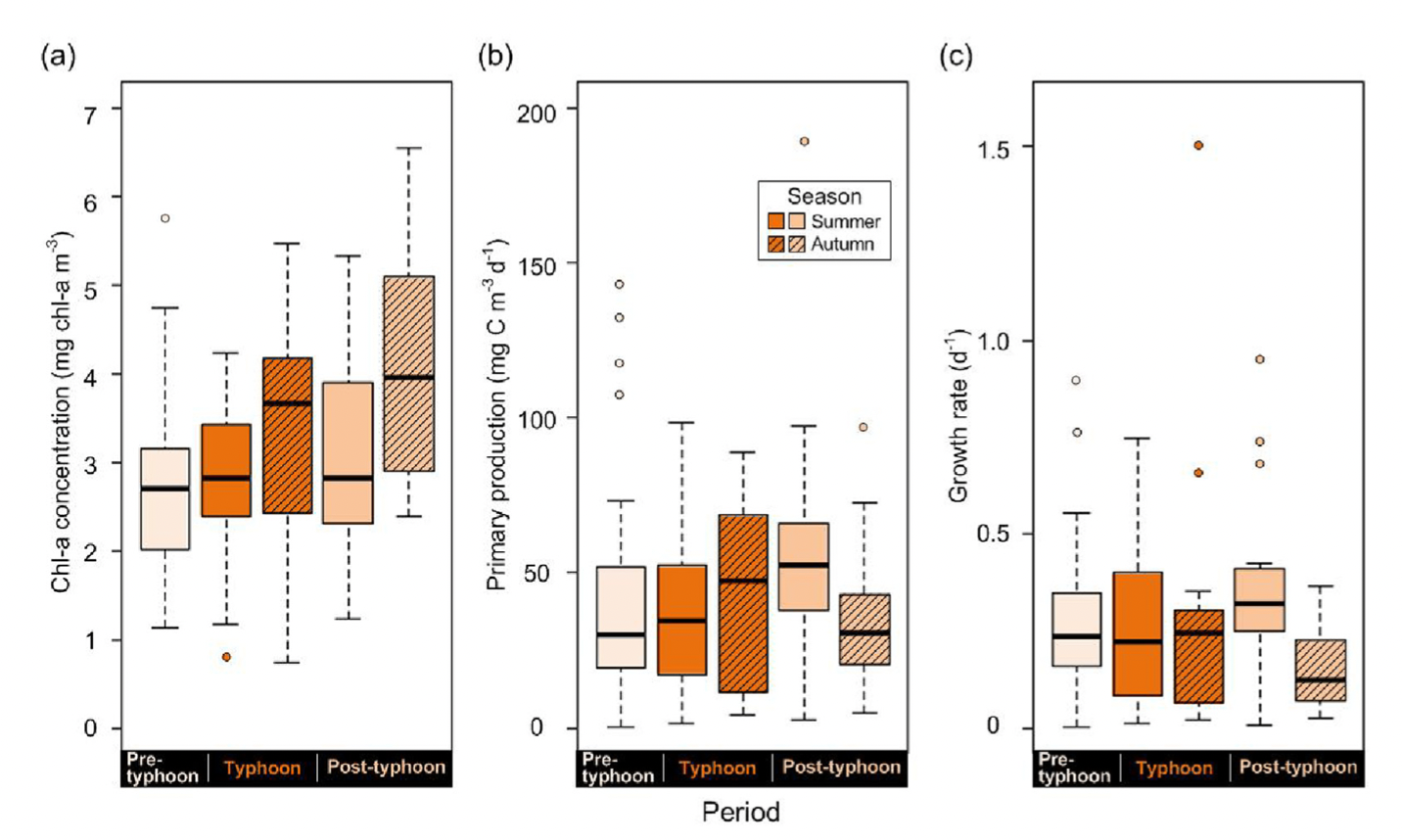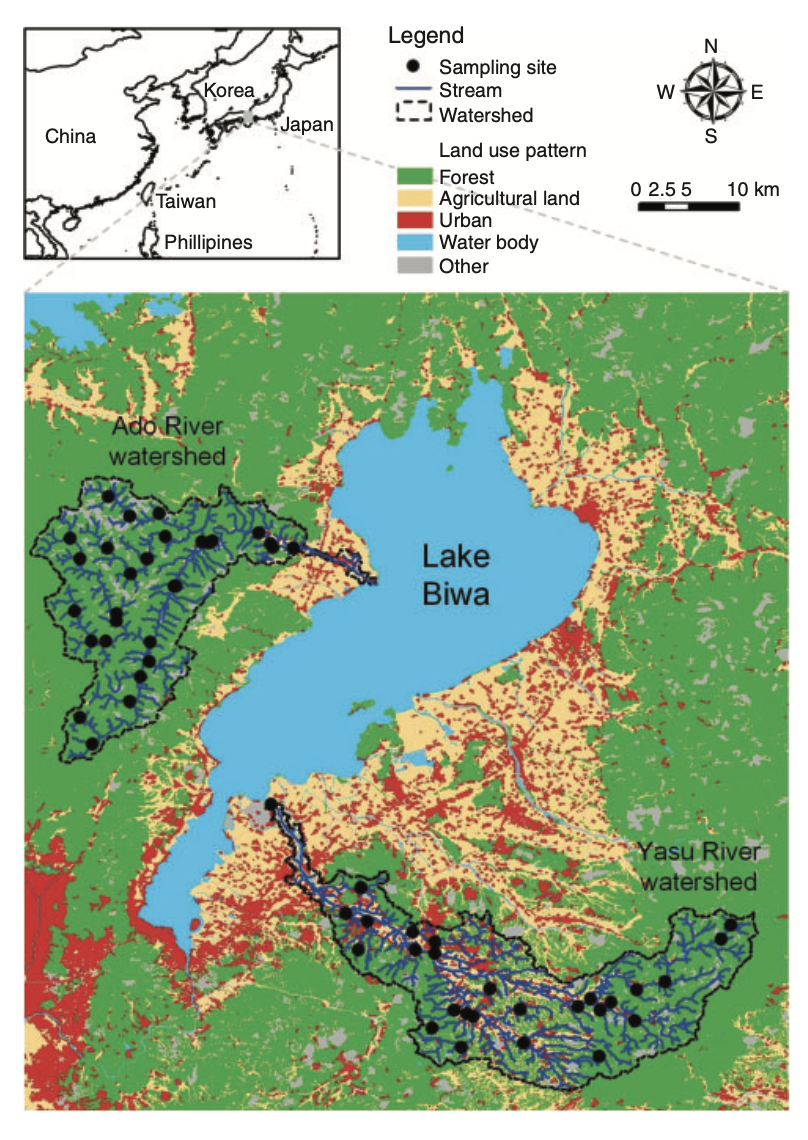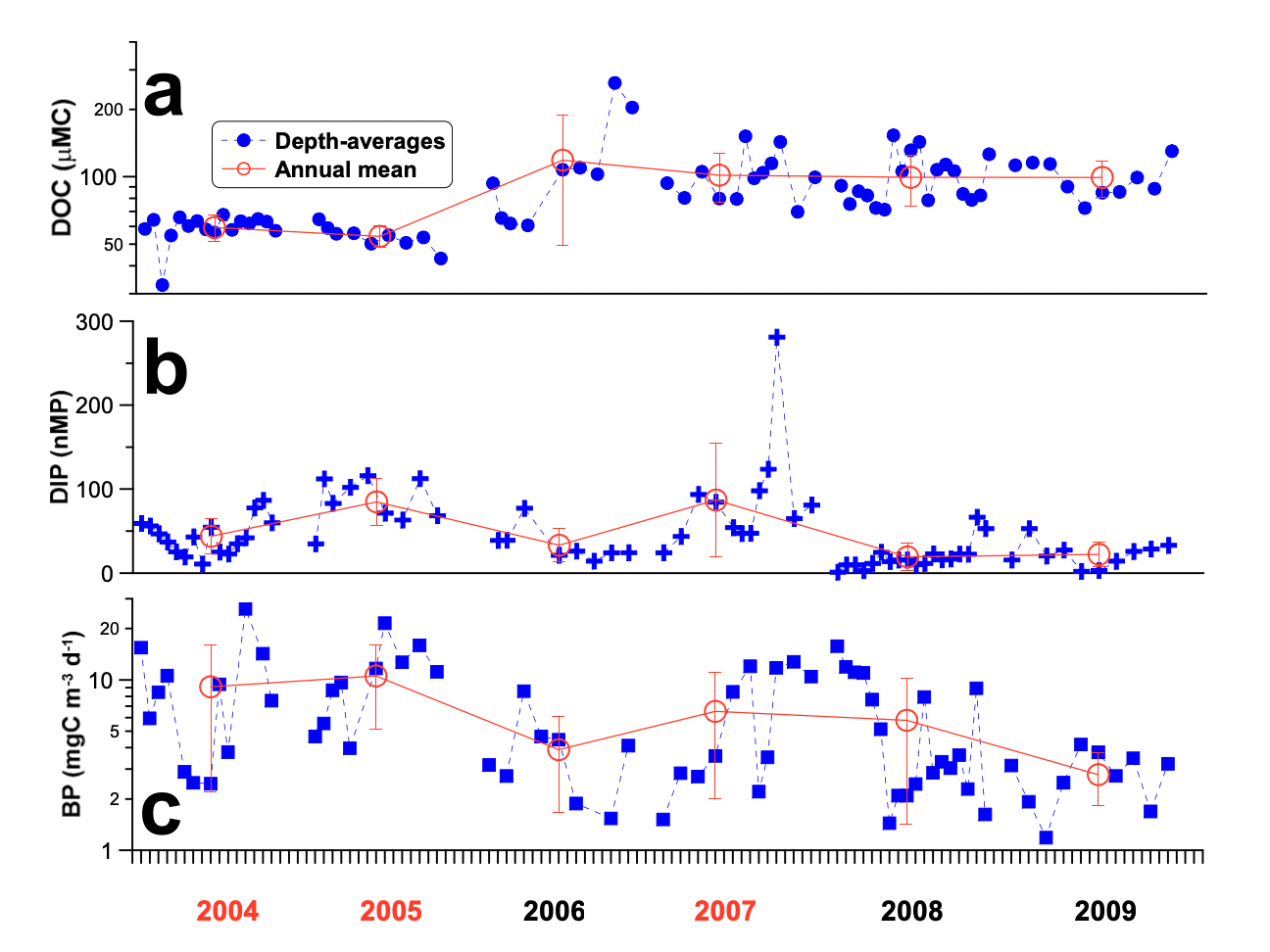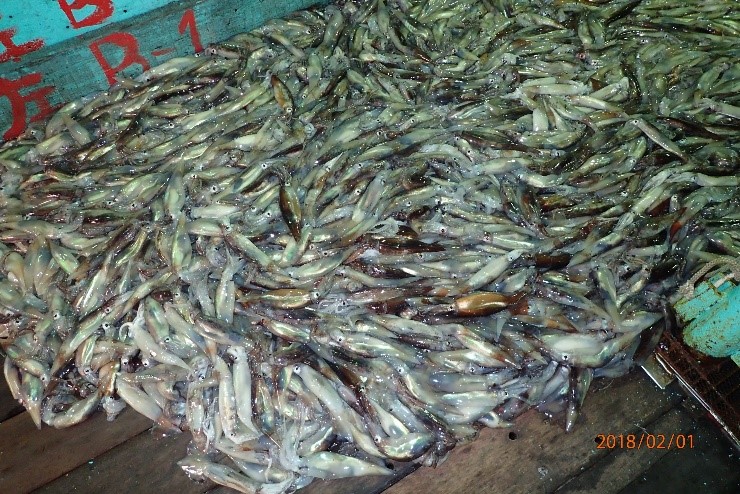I. Impacts of Species Distributions, Community Assemblages and Ecosystems under Climate Change
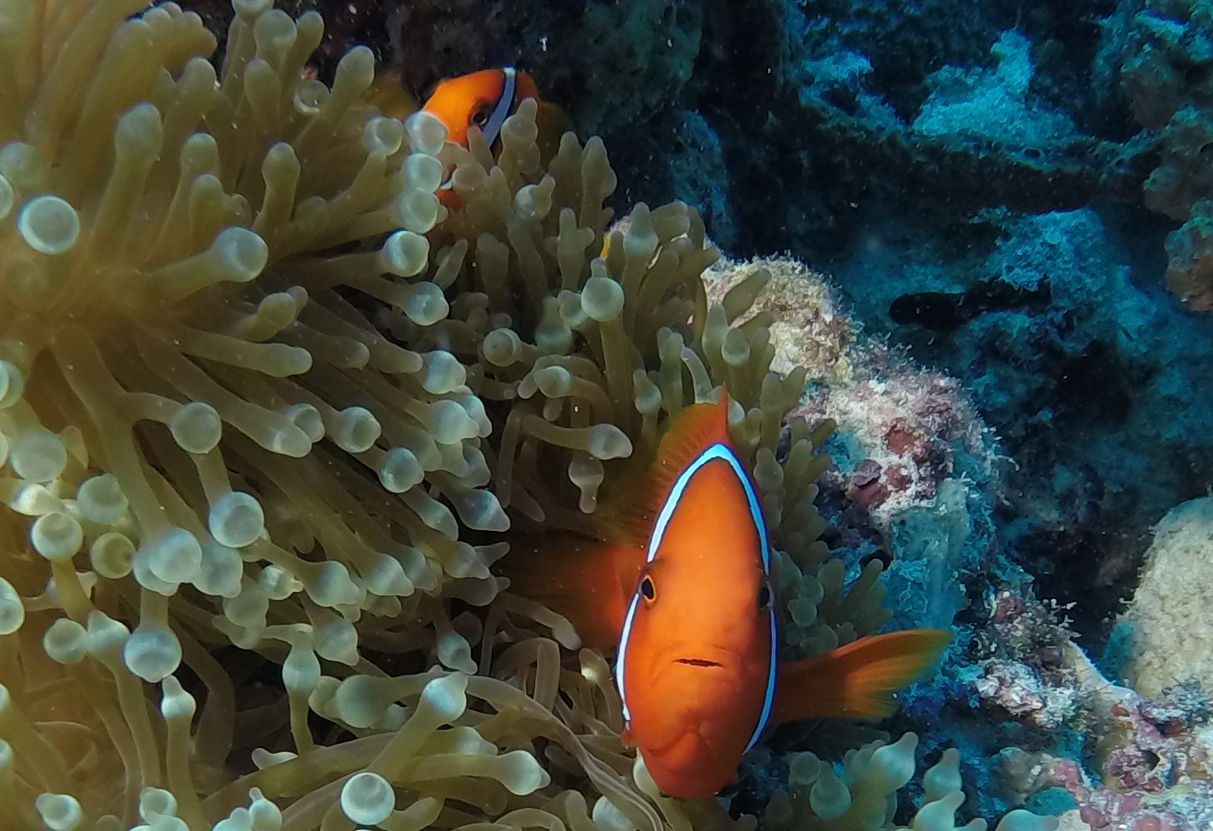
In addition to focusing on individual species, adding considerations of biotic interactions between species is necessary, when assessing impacts of climate change on species distributions. We use a variety of species distribution modeling to understand impacts of climate change both on terrestrial and marine ecosystems. Through the establishment of global species databases, we explore changes in species’ spatial distributions from the past to the present, particularly using biogeographical interactions. We additionally explore underlying environmental factors, which drive such species’ distribution shifts. We then project species distributions and interactions based on aforementioned relationships. This research theme will combine subsequent cross-disciplinary scientific aspects, add economic and social factors, and apply for management and conservation.
(1) Biogeography
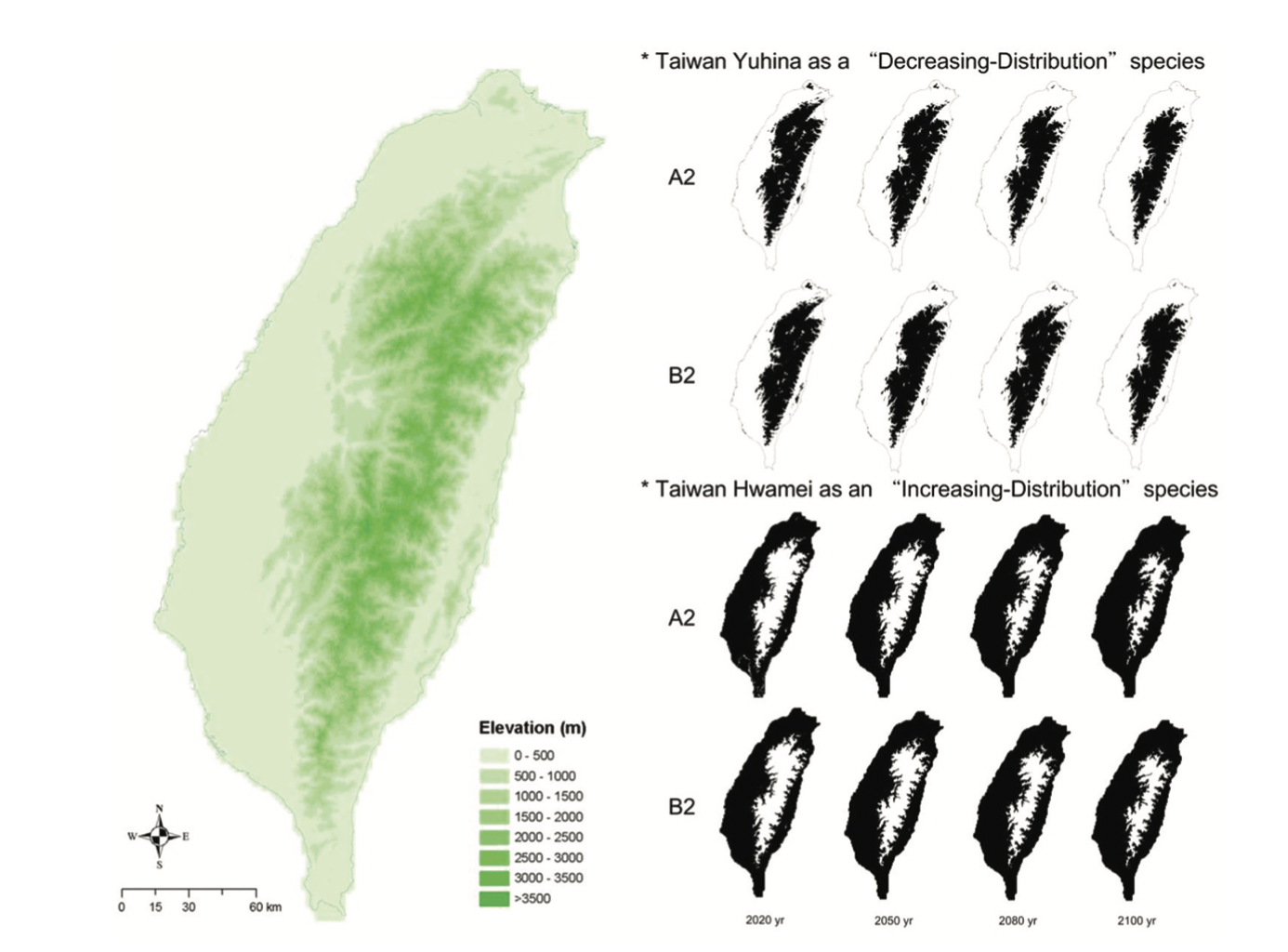
[Global Change Projections for Taiwan Endemic Birds]—Endemic species are high-risk species that require special attention to their loss of unique and threatened habitats. Fifteen of the Taiwanese endemic bird species were projected to decrease in distribution by 2100, whereas two species, the Styan’s Bulbul (Pycnonotus taivanus) and the Taiwan Hwamei (Garrulax taewanus), were predicted to increase. A comparison of the actual observed elevation ranges and medians showed that the two “increasing-distribution” species occupied ranges whose median elevation was below the overall median elevation of Taiwan. Changing trends in species’ projected occupancy of maximum and minimum elevations revealed differing shift rates that could further explain why a species could increase or decrease. Under both the A2 and B2 scenarios, the “decreasing-distribution” species’ shift in minimum elevations from 2020 to 2100 would occur more rapidly than the corresponding change in maximum elevations. Together, these changes would cause species’ distributions to shrink. However, the “increasing-distribution” species would have an unchanging minimum elevations but higher maximum elevations than in a previous temporal snapshot. These changes would broaden their distribution areas. (See Publications Ko et al. 2009; Ko et al. 2012)
[Dietary guild composition and disaggregation of avian assemblages]—Through exploring how climate change projected by 2100 may transform the world’s avian assemblages by modeling environmental niche-based changes to their dietary guild structure under different dispersal distances, we examined guild structure changes at coarse (primary, high-level, and mixed consumers) and fine (frugivores, nectarivores, insectivores, herbivores, granivores, scavengers, omnivores, and carnivores) ecological resolutions to determine whether or not geographic co-occurrence patterns among guilds were associated with the magnitude to which guilds are functionally resolved. Under a nondispersal scenario, the highest proportions of highly impacted grid cells showed that high-level consumers are expected to increase in relative richness at the expense of primary and mixed consumers. As dispersal distances increased, a greater propensity for primary and mixed consumers would increase in relative richness at the expense of high-level consumers. Further exploration into the consequences of these significant broad-scale ecological functional changes at the community or ecosystem level should be increasingly on the agenda for conservation science. (See Publication Ko et al. 2014)
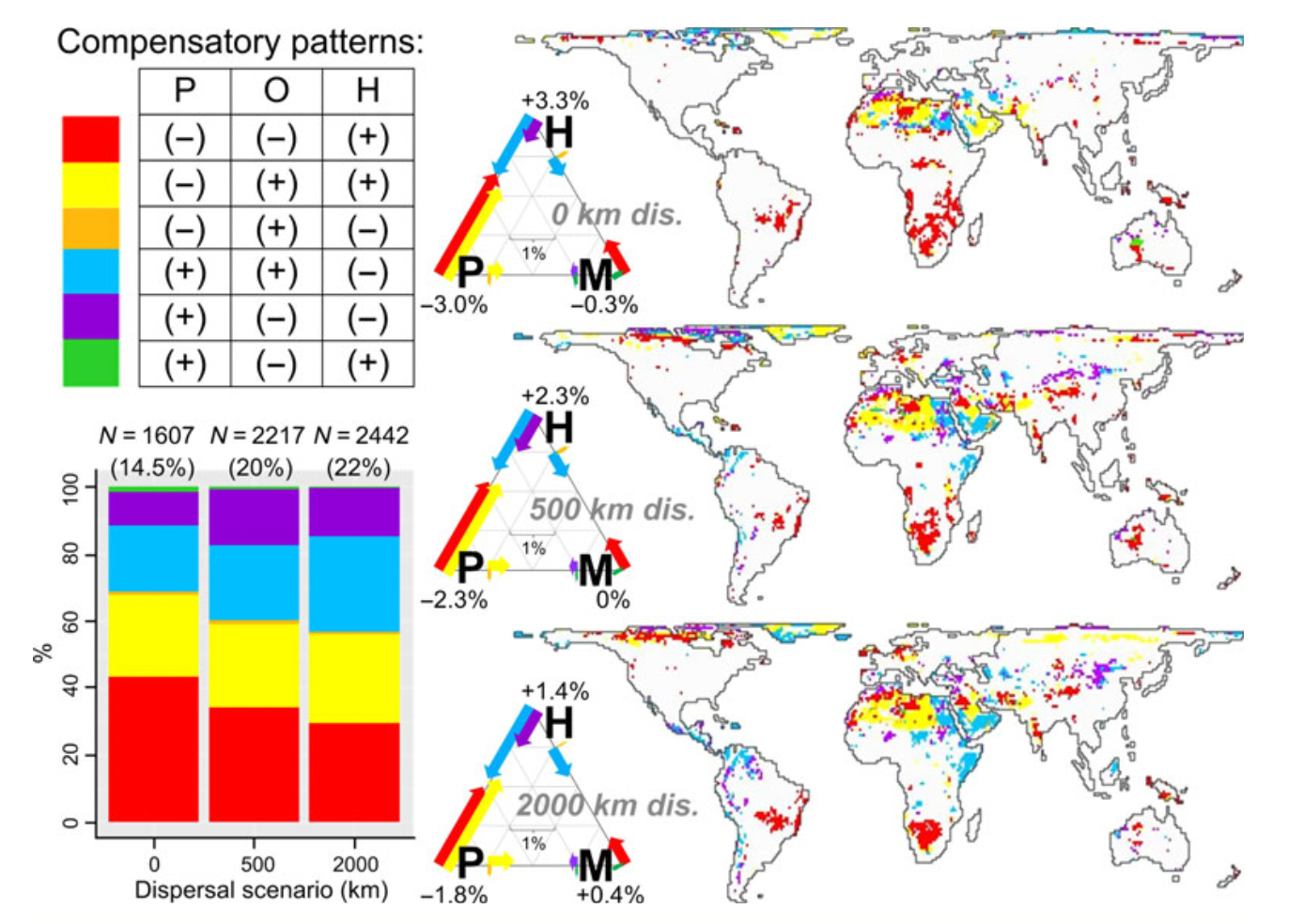
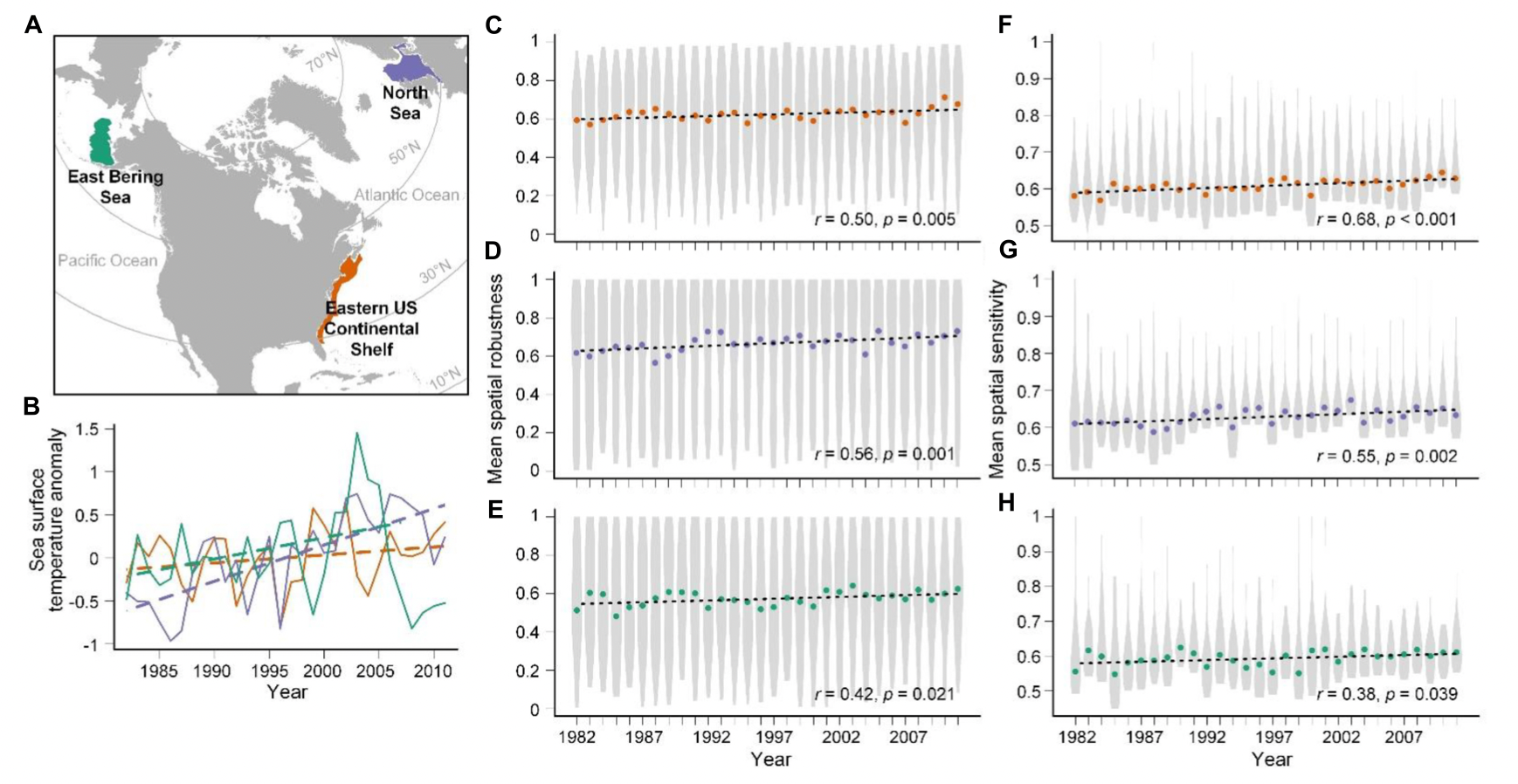
[Using Geographical Overlaps to Track Species Interactions and Community Coexistence Instability]—We analyze geographical overlaps to infer species interaction networks and provides indices of species interdependence, including mean spatial robustness (MSR), which represents the geographical impact of a species on other species, and mean spatial sensitivity (MSS), which indicates how a species is influenced by other species, to explore how species can spatially affect each other. In addition, when integrating MSR and MSS further allows us to assess community coexistence stability and structure. We found consistent and significant long-term increasing temporal trends of MSR and MSS were found in large marine communities across latitudes. Such species geographical interactions exhibited different correlations with species’ range sizes, number of interacting species, and species’ median proportion of overlap with interacting species. However, there were decreases in correlation strength over the past decades, indicating gradually symmetrical geographical structures in coexistence and unstable marine communities over time under environmental and climatic changes. (See Publication Lai et al. 2022)
[Trends in Geographic Sensitivity of Marine Fishes]—Extending from the above study, we also found that the species geographic interactions before warming was highly correlated with the relative change in current species geographic interactions. Depth range, body length, and age at maturity together explained most variations in species geographic interactions among species. (See Publication Tu et al. 2022)
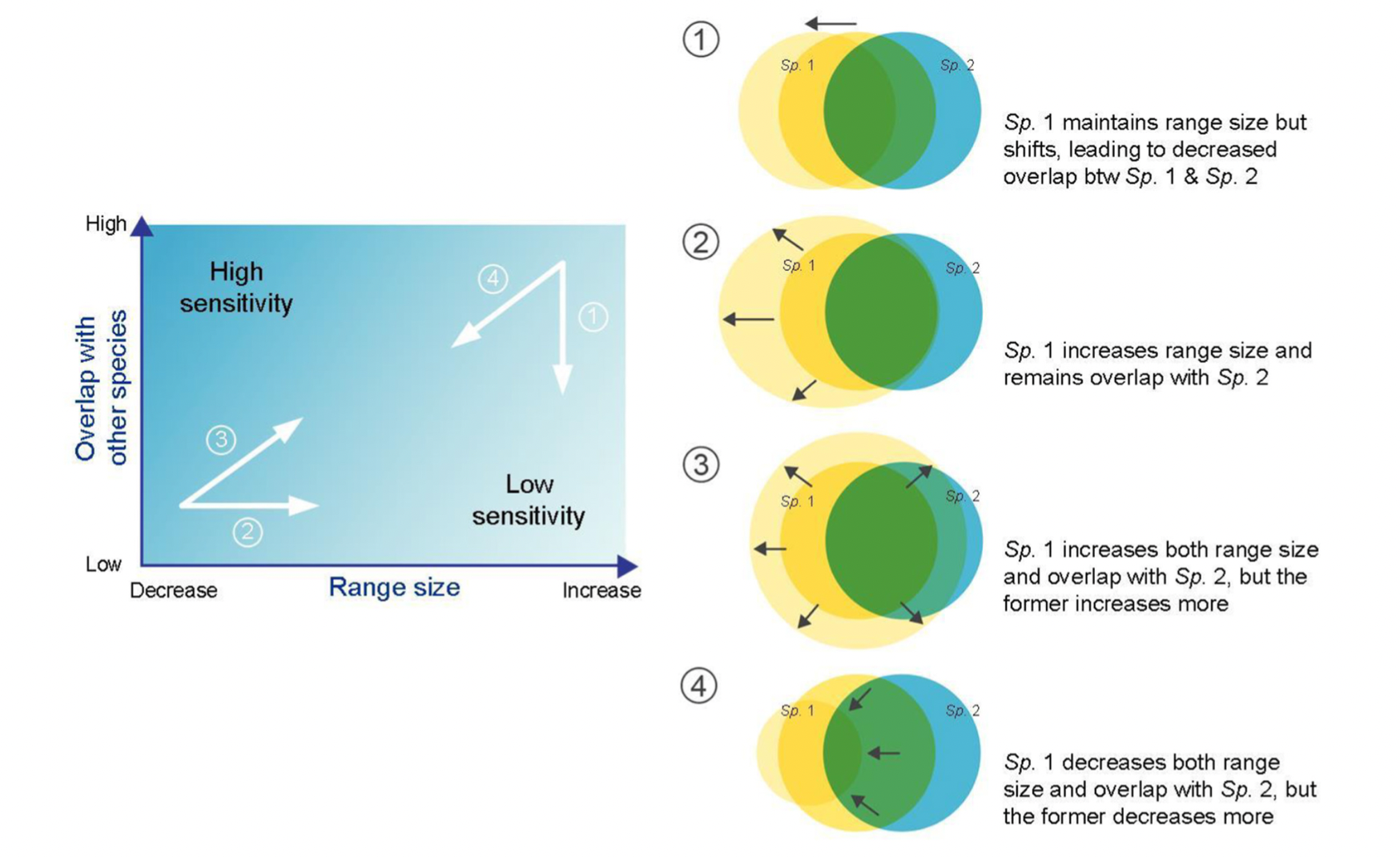
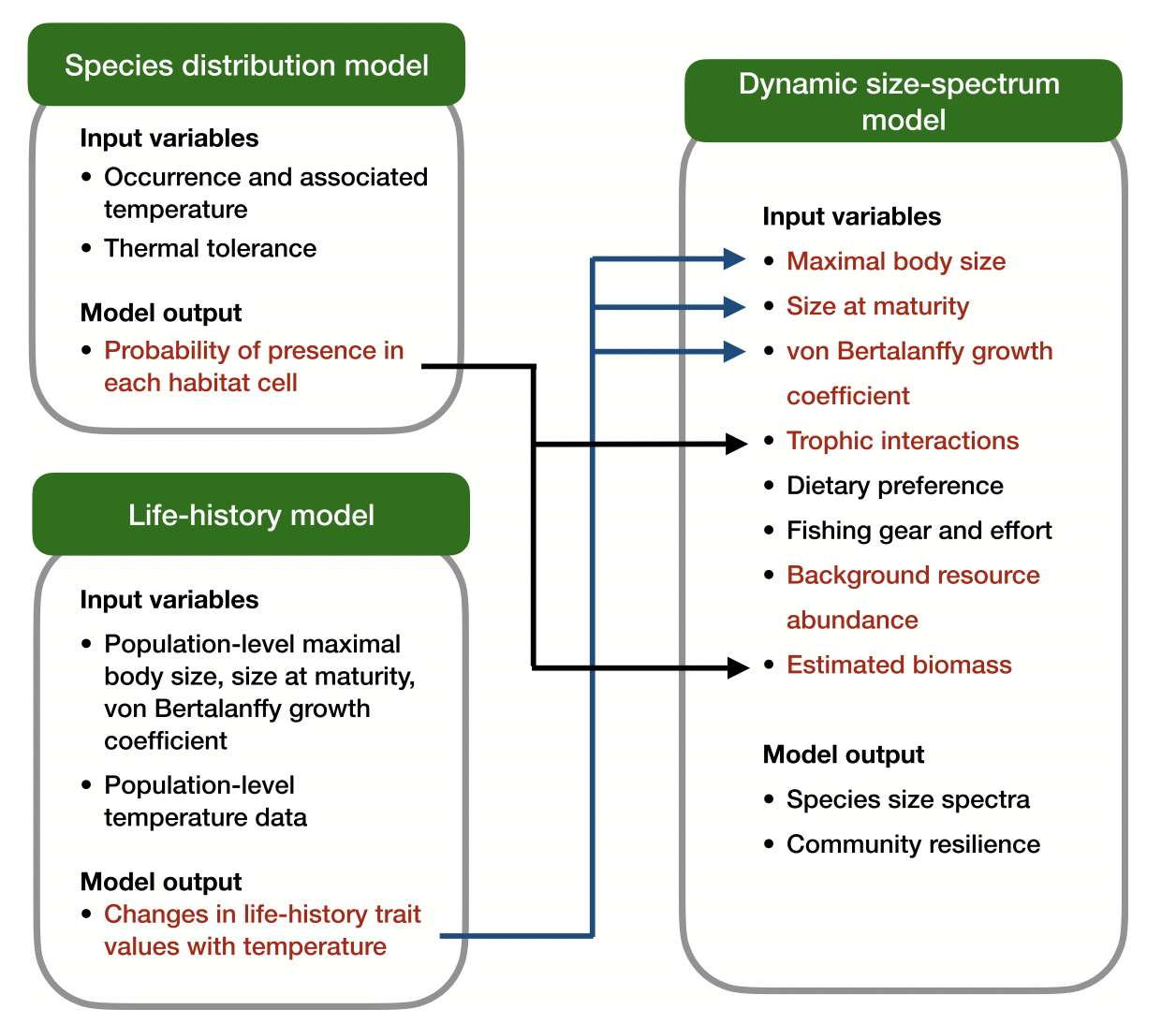
[Assessing Warming Impacts on Marine Fishes by Integrating Methods]—Climate change pose a continuing threat to communities at multiple ecological levels. Range shifts, life-history changes, and alterations of trophic dynamics are three important aspects of warming impacts, yet there has not been a formal integration for them. We presented a novel and simple framework to assess marine species future distributions using thermal physiological temperatures. We found that warming generally reduces species biomass and shifts species size spectra towards larger individuals, but there were no strong correlations with species, species size and the pace of life history. More severe warming also affect the community more vulnerable to top-down perturbations, even though the community might remain sufficiently resilient overall. (See Publication Kuo et al. 2022)
(2) Dietary Shifts for Cephalopod

[Dietary Shifts for Argentine Shortfin Squid]—Argentine shortfin squid Illex argentinus is one of the major resources in squid fisheries globally, accounting for about 10% of the total catch of cephalopods, and also important in Taiwanese offshore fisheries. Using stomach analysis, we found that the Argentine shortfin squids switched from a diet dominated by crustaceans at small sizes to consuming larger prey, predominantly fishes and/or cephalopods, at large sizes during their growth and southward migration. Significantly higher consumption of fishes was observed in recent years compared with that observed in other studies since 1992, implying impacts of climate change on marine ecosystems in the Southwest Atlantic. (See Publication Chang et al. 2021)







